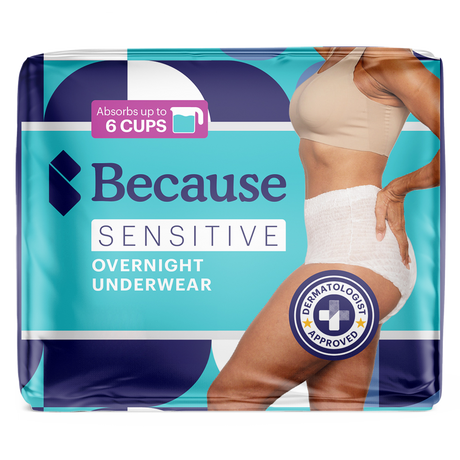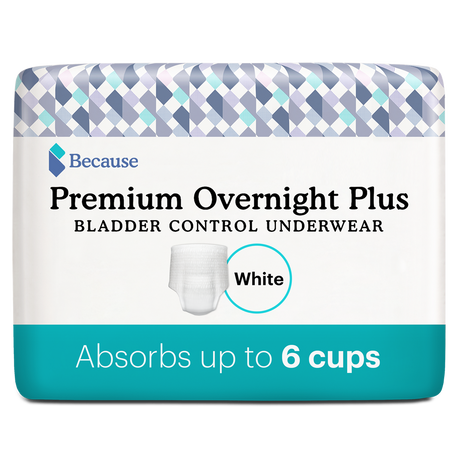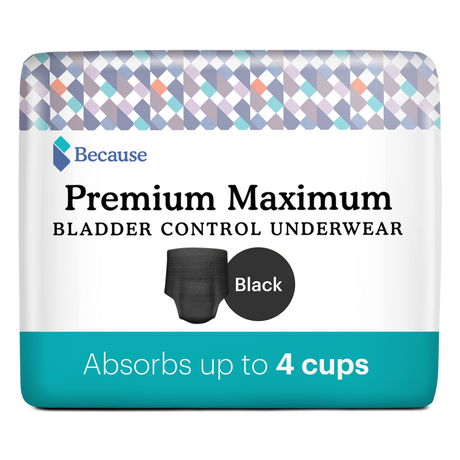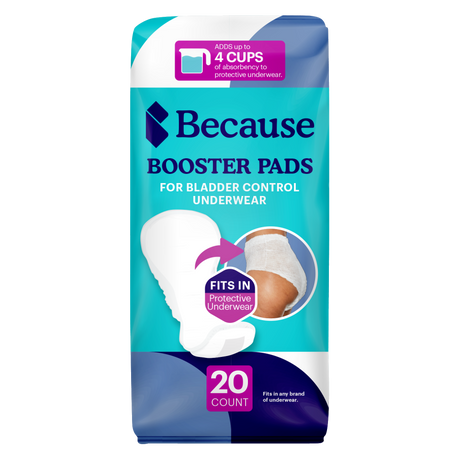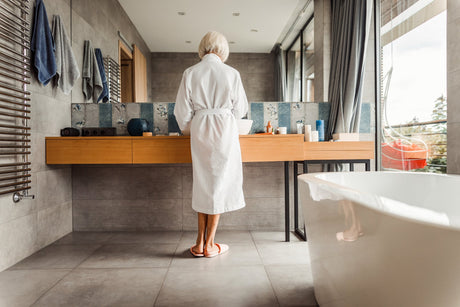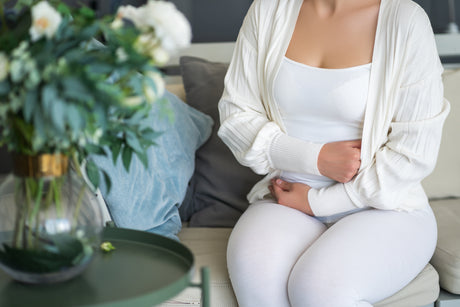Have you ever found yourself in a tense situation, only to experience an unexpected and intense urge to urinate? You might be questioning whether this occurrence is mere happenstance or if your heightened state of anxiety has heightened your awareness of bodily functions, or even if stress itself is directly impacting your bladder. In this blog post, we will delve into the intricate relationship between stress and an overactive bladder. Additionally, we'll discuss effective strategies to alleviate symptoms and manage this connection for a more comfortable and controlled experience.

Can Anxiety and Stress Make You Pee More?
The connection between heightened emotional states and increased frequency of urination is a well-documented phenomenon. Anxiety and stress can activate the body's 'fight or flight' response, releasing hormones that signal the bladder muscles to contract. This response, in turn, leads to a more frequent urge to pee.
Additionally, stress can heighten awareness of bodily functions, making individuals more attuned to the sensations in their bladder. In this intricate interplay between mental and physical well-being, understanding how anxiety and stress can influence your bathroom habits is crucial. Exploring coping mechanisms and stress-management techniques may not only bring relief to your mind but also contribute to a more balanced and controlled urinary experience.
Can Anxiety Cause Incontinence?
The relationship between anxiety and its potential impact on bodily functions extends to the realm of incontinence. Anxiety, a pervasive mental health condition, has been identified as a contributing factor to the development or exacerbation of incontinence in some individuals. The physiological response to anxiety involves the release of stress hormones, which can affect the muscles and nerves involved in bladder control. .
Understanding the Brain-Bladder Connection
For some, heightened anxiety levels may lead to increased muscle tension, urinary urgency, and difficulty maintaining control over bladder function. The brain-bladder relationship is complex, involving a network of signals and neurotransmitters. Anxiety, a common mental health concern, can impact this delicate balance, influencing the way the brain communicates with the bladder.
Stress hormones released during anxious moments can lead to heightened muscle tension in the pelvic area, affecting urinary control. Furthermore, anxiety may amplify one's awareness of bodily sensations, intensifying the perception of urgency and making it challenging to maintain continence.
How Anxiety Can Cause Frequent Urination
Anxiety, with its profound impact on the mind and body, can manifest in various physical symptoms, and frequent urination is one notable effect. The body's stress response triggers the release of hormones like adrenaline, which can stimulate the muscles, including those in the bladder. This heightened muscle activity can lead to an increased urge to urinate, even when the bladder is not necessarily full.
Additionally, anxiety may provoke a heightened state of vigilance and awareness of bodily functions, making individuals more attuned to subtle sensations related to the bladder. The combination of these physiological and psychological factors can result in a persistent feeling of urgency and a frequent need to use the restroom. This can also manifest as nocturia, the frequent need to urinate at night. If your anxiety is keeping you up at night and you’re hyper aware of your bodily functions, you could find yourself getting up multiple times a night.
Understanding these mechanisms is crucial in addressing anxiety-related frequent urination, as it paves the way for implementing effective stress-management strategies and promoting a healthier balance between mental well-being and bladder function.

How to Stop Anxiety Urination
Addressing anxiety-related urination involves a multifaceted approach that combines both mental and physical strategies. First and foremost, managing anxiety itself is key to alleviating the associated urinary symptoms.
Lifestyle Changes to Alleviate Stress and Anxiety
The first line of defense in mental health treatment is often lifestyle changes. In the case of anxiety-induced overactive bladder, there are several strategies you can try to lower your overall stress which may help reduce your urge to urinate.
Techniques such as deep breathing exercises, mindfulness meditation, and progressive muscle relaxation can help calm the mind and reduce overall stress levels. Identifying and addressing the specific sources of anxiety through therapy or counseling can provide long-term benefits.
Additionally, establishing a regular bathroom routine, practicing pelvic floor exercises to enhance bladder control, and maintaining a healthy lifestyle with regular exercise and balanced nutrition can contribute to better overall urinary health.
There are also techniques that may be beneficial for anxiety that you may not know can also improve incontinence. Acupuncture is one of those techniques. The jury is still out on whether acupuncture is a sure fire way to treat incontinence, but some patients do find relief. Scientists who conducted the meta-analysis found that the treatment group studied woke up to use the bathroom at night less frequently. This effect suggests that acupuncture might help people with OAB sleep better with fewer interruptions.
Seeking Professional Help for Anxiety
Seeking guidance from healthcare professionals, such as urologists or mental health specialists, can provide personalized strategies and support. By adopting a comprehensive approach that targets both the mental and physical aspects, individuals can work towards minimizing anxiety-related urination and fostering a sense of control over their bodily functions.

Lifestyle Changes to Improve Bladder Control
Supplements for Overactive Bladder
Taking a daily supplement to help strengthen your bladder can help you control and reduce urges that may arise from stressful situations. Pumpkin seed oil supplements have gained attention for their potential benefits in improving bladder control. Rich in various nutrients, including omega-3 and omega-6 fatty acids, antioxidants, and vitamins, pumpkin seed oil is believed to support urinary health. Some studies suggest that the oil's natural compounds may help strengthen pelvic floor muscles and promote overall bladder function.
Additionally, pumpkin seed oil contains beta-sitosterol, a plant sterol that may have anti-inflammatory properties, potentially reducing inflammation in the bladder and supporting a healthy urinary tract.
Because’s Daily Bladder Control Supplement utilizes the power of pumpkin seed oil to help reduce leaks and feelings of urgency. By taking 2 pills per day you’ll begin seeing results in 6 weeks.*
Bladder Control Exercises
Bladder control exercises, often referred to as pelvic floor exercises or Kegel exercises, are instrumental in managing and alleviating symptoms associated with an overactive bladder. These exercises specifically target the pelvic floor muscles, which play a crucial role in urinary control.
By regularly engaging in Kegel exercises, individuals can enhance the strength and endurance of these muscles, ultimately improving their ability to regulate bladder function. The exercises involve contracting and relaxing the pelvic floor muscles, mimicking the action used to interrupt the flow of urine. Incorporating such exercises into a daily routine can help increase bladder capacity, decrease urinary urgency, and enhance overall control.
Consulting with a healthcare professional or a pelvic health physiotherapist can provide personalized guidance on the most effective exercises and ensure proper technique. Bladder control exercises offer a non-invasive and empowering approach for individuals seeking to manage the challenges associated with an overactive bladder.
Behavioral Techniques for Bladder Control
Behavioral techniques are valuable tools in the comprehensive management of overactive bladder (OAB). These strategies focus on modifying habits and lifestyle factors to reduce symptoms and enhance bladder control.
One effective technique involves bladder training, where individuals gradually increase the time between bathroom visits, helping to stretch the bladder and improve its capacity. Scheduled voiding is another approach, establishing a regular pattern for restroom breaks to prevent urgency. Additionally, fluid management encourages optimal hydration without exacerbating OAB symptoms. Implementing lifestyle modifications such as weight management and avoiding bladder irritants like caffeine and alcohol can also contribute to symptom relief. Double voiding is another technique that may help. Double voiding involves trying to urinate a second time immediately following using the restroom. This can help empty the bladder more fully.
Behavioral techniques empower individuals to take an active role in managing their overactive bladder, providing practical and non-invasive solutions that can significantly improve their quality of life. Consulting with healthcare professionals or specialists in pelvic health can offer personalized guidance and support in implementing these techniques effectively.

Medical Interventions for Incontinence
Medical interventions for incontinence encompass a range of treatments designed to address the underlying causes and symptoms of this condition. One common approach involves medication, such as anticholinergic drugs, which help relax bladder muscles and control involuntary contractions. In some cases, mirabegron, a medication that enhances bladder capacity, may be prescribed.
For stress incontinence, which is often related to weakened pelvic floor muscles, surgical procedures like sling placement or urethral bulking agents may be recommended to provide structural support. For overactive bladder, Botox injections into the bladder wall can temporarily paralyze muscles, reducing urgency and frequency.
In more severe cases, where conservative methods prove ineffective, surgical options like a bladder augmentation or urinary diversion may be considered. The choice of medical intervention depends on the type and severity of incontinence, and individuals are encouraged to consult with healthcare professionals to determine the most suitable treatment plan tailored to their specific needs and circumstances.
For more information on medical treatment options for incontinence, see our blog Medical Treatment for Incontinence: An All-Encompassing Look at Managing Leaks
Other Potential Causes and When to See Your Doctor
Incontinence can result from various underlying causes beyond the commonly discussed factors such as weakened pelvic muscles or overactive bladder. Neurological conditions like multiple sclerosis or Parkinson's disease, urinary tract infections, hormonal changes, and certain medications can contribute to urinary incontinence.
It is crucial to recognize that incontinence is not a normal part of aging, and individuals experiencing persistent symptoms should promptly seek medical attention. If the frequency and severity of incontinence increase, impacting daily activities and quality of life, consulting a healthcare professional becomes imperative.
Additionally, sudden or unexplained changes in urinary habits, blood in the urine, or discomfort during urination should not be ignored. Seeking timely medical advice allows for a comprehensive evaluation, accurate diagnosis, and appropriate intervention tailored to address the specific causes and types of incontinence, ensuring optimal management and improved overall well-being.
*These statements have not been evaluated by the food and drug administration. This product is not intended to diagnose, treat, cure or prevent any disease.
Sources:
Felde, G., Ebbesen, M.H. and Hunskaar, S. (2017), Anxiety and depression associated with urinary incontinence. A 10-year follow-up study from the Norwegian HUNT study (EPINCONT). Neurourol. Urodynam. , 36: 322-328. https://doi.org/10.1002/nau.22921
Lai HH, Rawal A, Shen B, Vetter J. The Relationship Between Anxiety and Overactive Bladder or Urinary Incontinence Symptoms in the Clinical Population. Urology. 2016 Dec;98:50-57. doi: 10.1016/j.urology.2016.07.013. Epub 2016 Jul 19. PMID: 27450939; PMCID: PMC5116264.
Yaribeygi H, Panahi Y, Sahraei H, Johnston TP, Sahebkar A. The impact of stress on body function: A review. EXCLI J. 2017 Jul 21;16:1057-1072. doi: 10.17179/excli2017-480. PMID: 28900385; PMCID: PMC5579396.

